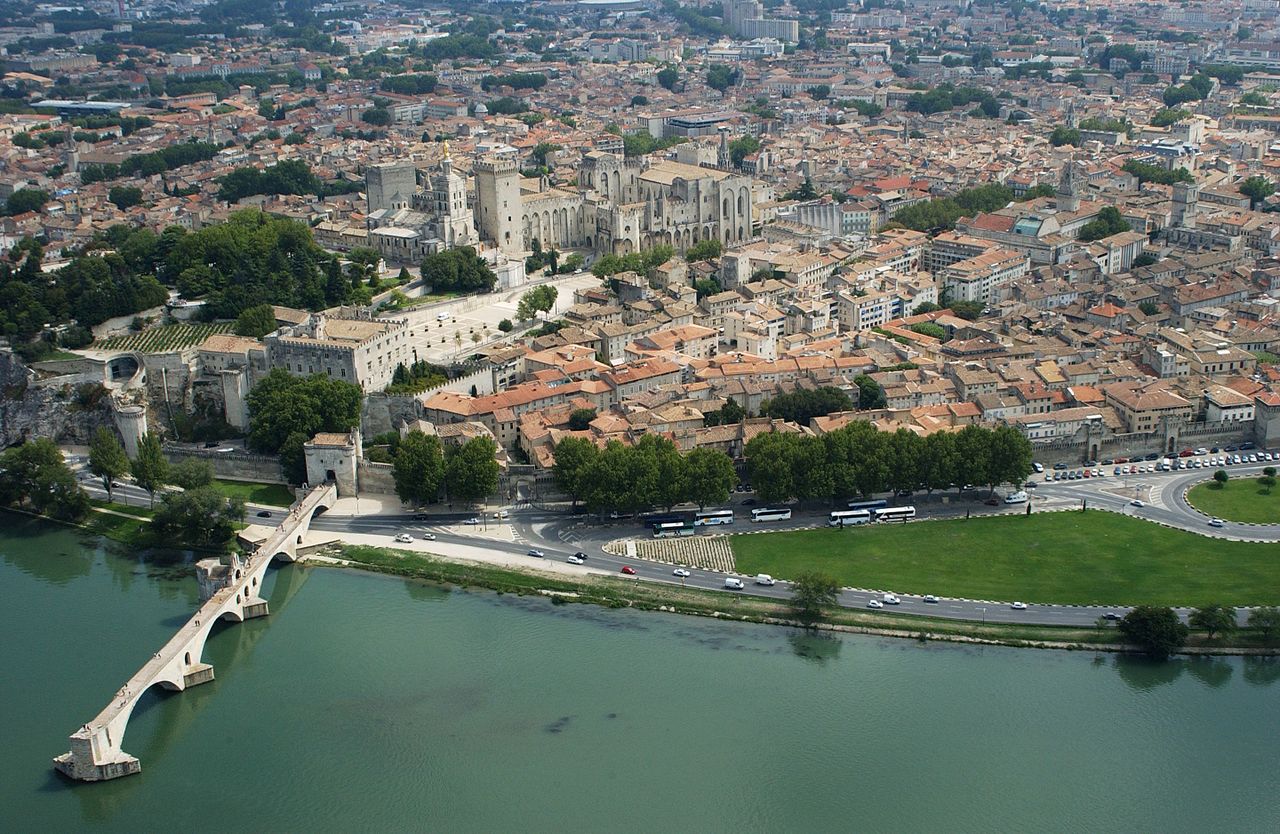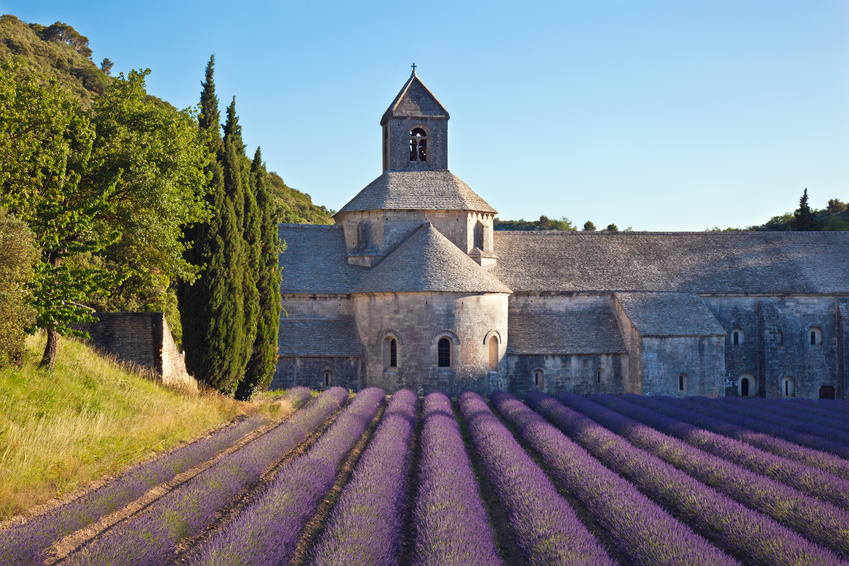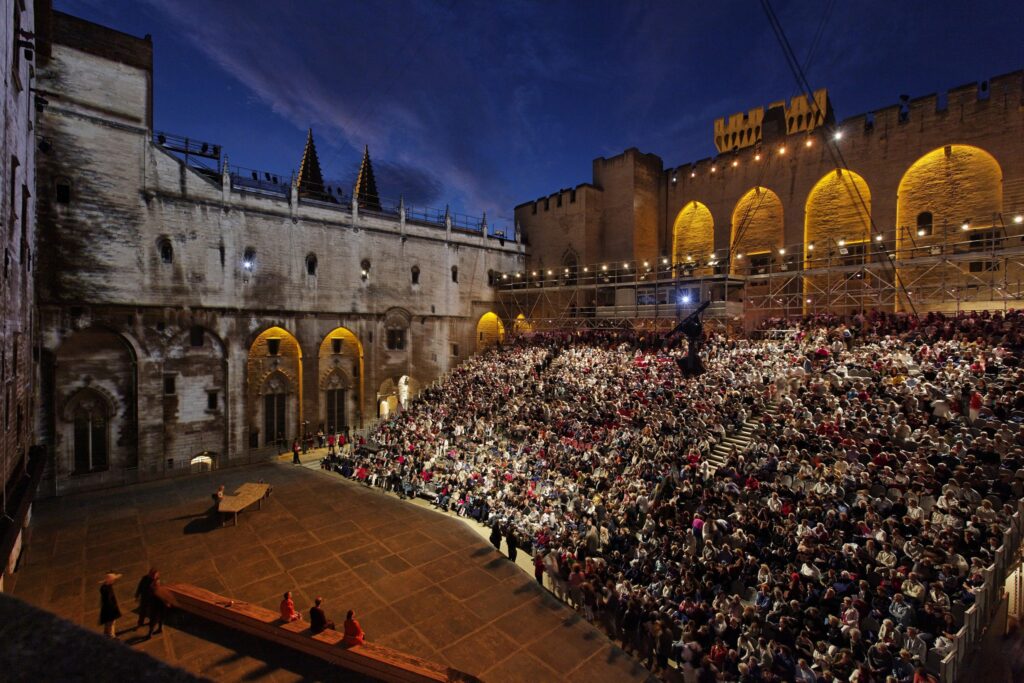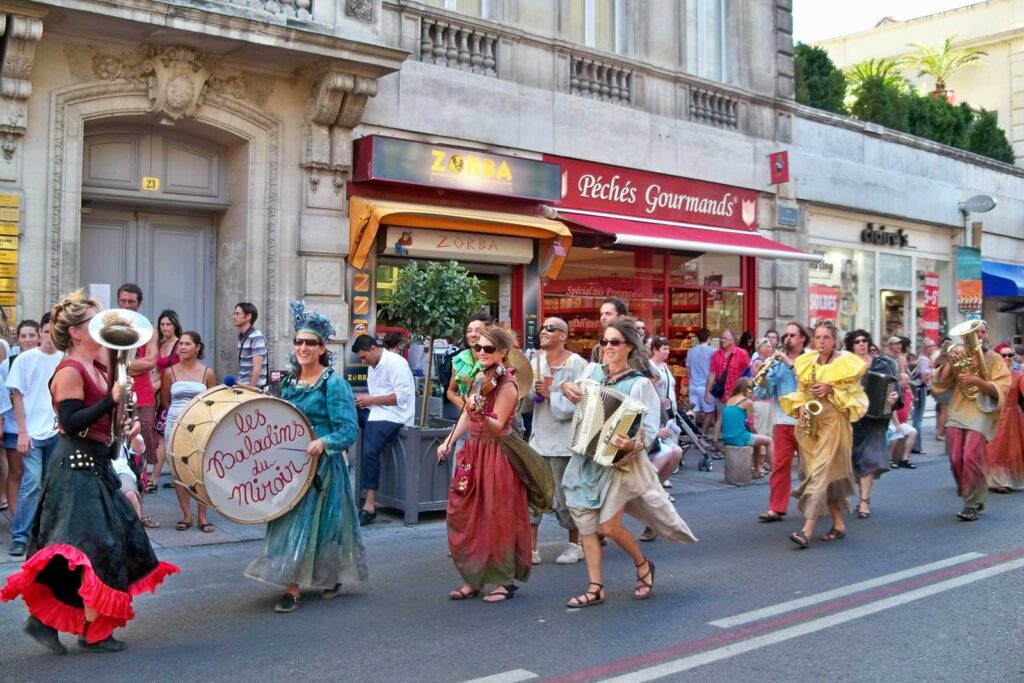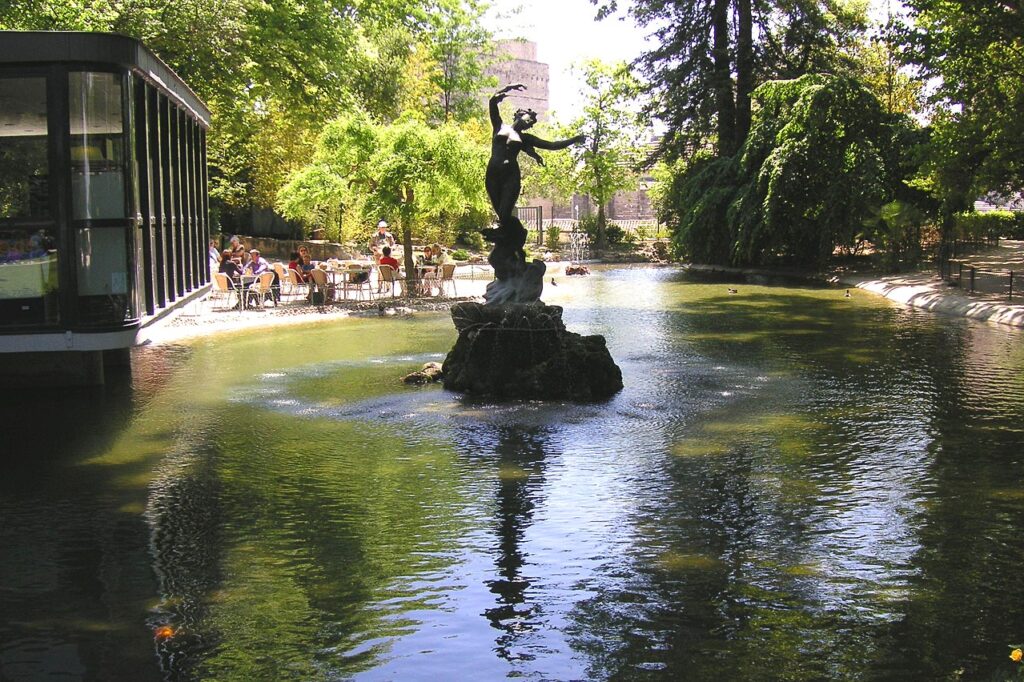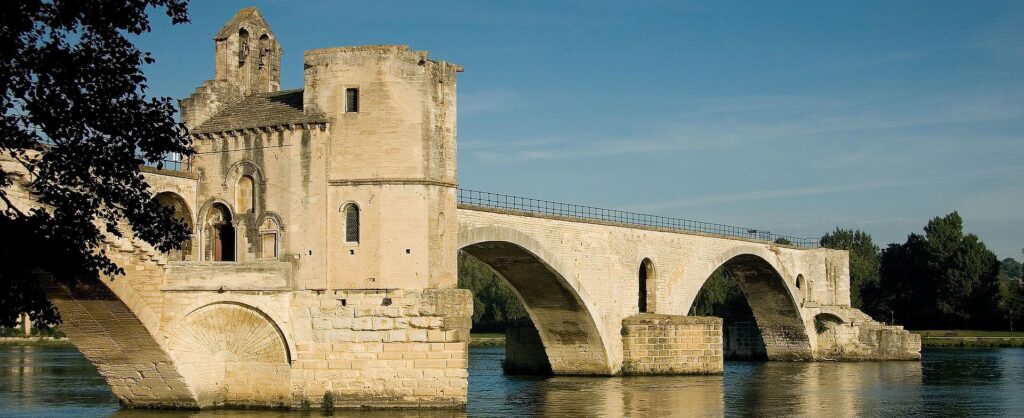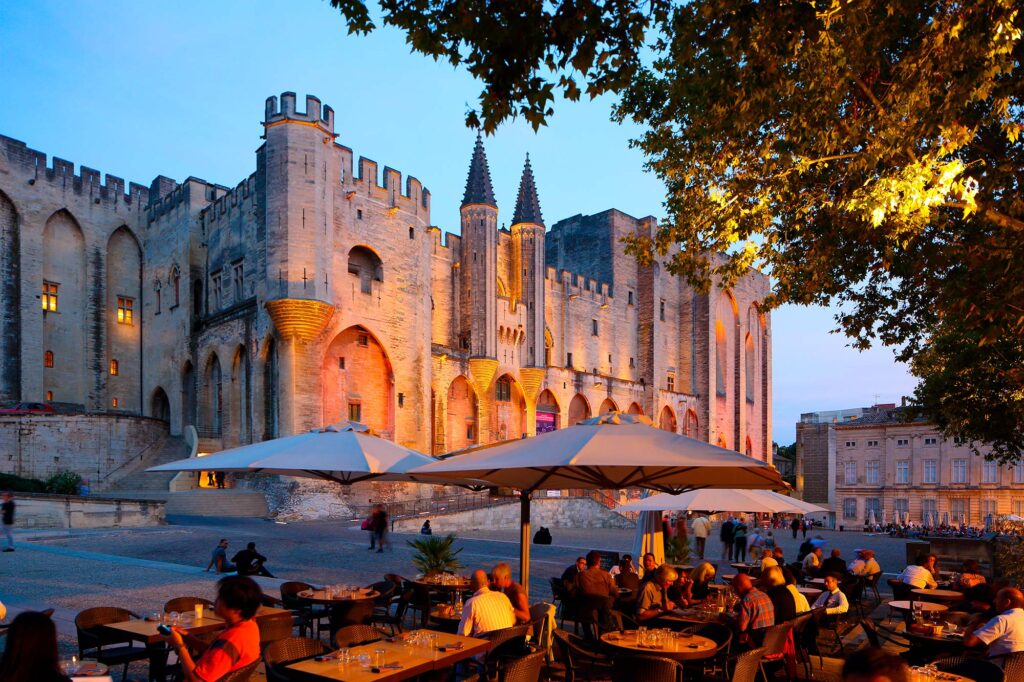Avignon is the prefecture of the Vaucluse department in the Provence-Alpes-Côte d’Azur region of Southeastern France. Located on the left bank of the river Rhône.
| Country | France |
|---|---|
| Region | Provence-Alpes-Côte d’Azur |
| Department | Vaucluse |
| Mayor (2020–2026) | Cécile Helle (PS) |
| Area1 | 64.78 km2 (25.01 sq mi) |
| Population (2017-01-01) | 91,921 |
| Density | 1,400/km2 (3,700/sq mi) |
| Time zone | UTC+01:00 (CET) |
| Summer (DST) | UTC+02:00 (CEST) |
Geography
Avignon is on the left bank of the Rhône river, a few kilometres above its confluence with the Durance, about 580 km south-east of Paris, 229 km south of Lyon and 85 km (53 mi) north-north-west of Marseille.
The city is in the vicinity of Orange, Nîmes, Montpellier, Arles, Salon-de-Provence, and Marseille.
Economy
Avignon is the seat of the Chamber of Commerce and Industry of Vaucluse which manages the Avignon – Caumont Airport and the Avignon-Le Pontet Docks.
Avignon has 7,000 businesses, 1,550 associations, 1,764 shops, and 1,305 service providers.
The tertiary sector is the most dynamic in the department by far on the basis of the significant production of early fruit and vegetables in Vaucluse, The MIN (Market of National Importance) has become the pivotal hub of commercial activity in the department, taking precedence over other local markets (including that of Carpentras).
Areas of economic activity
Tourism
Four million visitors come annually to visit the city and the region and also for its festival. The annual Festival d’Avignon is the most important cultural event in the city.
River tourism began in 1994 with three river boat-hotels. In 2011 there is a fleet of 21 river boat-hotel vessels, including six sight-seeing boats which are anchored on the quay along the Oulle walkways.
Agriculture
The city is the headquarters of the International Association of the Mediterranean tomato, the World Council of the tomato industry, and the Inter-Rhône organisation.
Industry
Only EDF (Grand Delta) with about 850 employees and Onet Propreté with just over 300 exceed 100 employees.
Transport
Roads
Avignon is close to two highways:
- the A7 autoroute
- the A9 autoroute
The city has nine paid parking buildings with a total of 7,100 parking spaces, parking buildings under surveillance with a capacity for 2,050 cars with a free shuttle to the city centre, as well as five other free parking areas with a capacity of 900 cars.
Railways
Avignon is served by two railway stations: the historic train station built in 1860, the Gare d’Avignon-Centre, located just outside the city walls, which can accommodate any type of train and, since 2001, the Gare d’Avignon TGV in the “Courtine” district south of the city, on the LGV Méditerranée line.
Airports
The Avignon – Caumont Airport on the south-eastern commune border has several international routes to England. The major airport in the region with domestic and international scheduled passenger service is the Marseille Provence Airport.
Water transport
The Rhône has for many centuries been an important means of transportation for the city. River traffic in Avignon has two commercial ports, docking stations for boat cruises, and various riverfront developments. A free shuttle boat has been established between the quay near the ramparts and the opposite bank.
Bicycles
Avignon has 110 km (68 mi) of bicycle paths.
Cultural heritage
Avignon has a very large number of sites and buildings (177) that are registered as historical monuments.
The buildings along the main street, Rue de la République, date from the Second Empire (1852–70) with Haussmann façades and amenities around Place de l’Horloge (the central square), the neoclassical city hall, and the theatre district.Statues gaze over the Place de l’Horloge in the town centre Paintings on the façades of buildings in the town centre.
Listed below are some major sites of interest with those sites registered as historical monuments indicated:
- Notre Dame des Doms (12th century), the cathedral, is a Romanesque building, mainly built during the 12th century.
- Civic buildings are represented most notably by:
- the Hôtel de Ville (city hall) (1846), a relatively modern building with a bell tower from the 14th century,
- the old Hôtel des Monnaies, the papal mint which was built in 1610 and became a music-school.
- Hospital Sainte-Marthe.
- Hotel of Saint-Priest (Hotel de Monery, 18th century).
- House of King René (15th century).
- Calvet Museum.It has a large collection of paintings, metalwork and other objects. The library has over 140,000 volumes.
- Musée Lapidaire, with collections of archaeological and medieval sculptures from the Fondation Calvet in the old chapel of the Jesuit College.
- Musée Louis-Vouland
- Musée Requien
Culture
Avignon Festival
A theatre festival is held annually in Avignon. The Avignon Festival comprises traditional theatrical events as well as other art forms such as dance, music, and cinema, making use of the town’s historical monuments. Every summer approximately 100,000 people attend the festival.
International Congress Centre
The centre was created in 1976 within the premises of the Palace of the Popes and hosts many events throughout the entire year. The Congress Centre, designed for conventions, seminars, and meetings for 10 to 550 persons, now occupies two wings of the Popes’ Palace.
Sport
Sporting Olympique Avignon is the local rugby league football team.
AC Arles-Avignon was a professional association football team. They played at the Parc des Sports, which has a capacity of just over 17,000.
Education
The schools within the commune of Avignon are administered by the Académie d’Aix-Marseille. There are 26 state nursery schools (Écoles maternelles) for children up to 6, and 32 state primary schools (Écoles élémentaires) up to 11. There are also 4 private schools.
